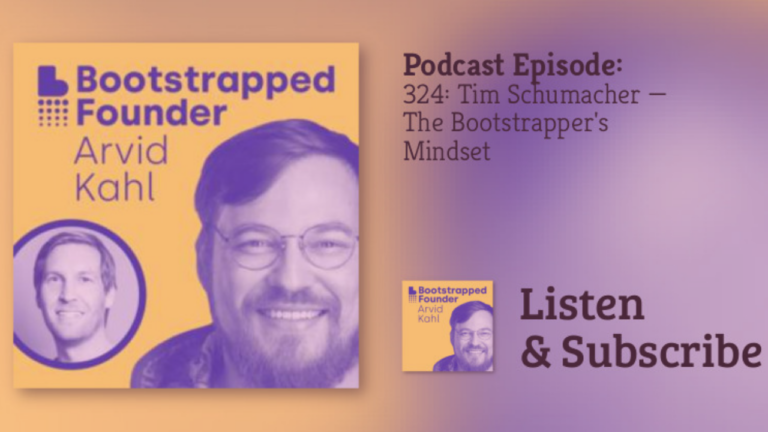INTRODUCTION
A comprehensive list of the 7 most important SaaS trends in 2023. Most of them inevitably continued ruling the industry from 2022 but some are fresh and are here to change the course of it, maybe, forever.
Customer expectations keep on pushing businesses to provide cutting-edge solutions and staying on top of the market trends may be exactly what will set you apart from competitors.
Let’s jump to it.
1. Future of work
Remember the first weeks of COVID when everyone was miserable—even about the thought of working from home? There were so many unanswered questions: how will it affect my personal life? My pay rate? Should I still wear a suit during office hours? How will I cooperate with my colleagues and know what’s going on with the tasks?
But the chaos died down pretty quickly when everyone realized the fantastic advantages of working remotely, and how your work-life situation is finally balanced after so many years.
Now it’s a totally different conversation. People are ready to quit jobs that don’t offer remote setups.
The data shows that the importance of remote software solutions is growing significantly, and companies are allocating more funds to satisfy scattered teams.
Therefore, there’s a huge spike in collaboration software options. Every week there are at least a couple more newcomers on Product Hunt alone, and the stream of them doesn’t seem to be dying down in the near future.
Top picks:
Notion / Slack – ready-to-use templates, intuitive UI, and simplicity make these the power duo.
Slite – the number of integrations is amazing and allows remote teams to share pretty much any piece of information in any format
Pipeline (acquired by saas.group) – it’s time to move from Excel sheets and Google Docs to a way more innovative platform
Listen to saas.unbound episode with Jana Schellong, a co-founder of beams, a meta layer of SaaS products that help you navigate your workday with more focus and less stress.
2. Niche micro-Saases
Overcomplicating and adding dozens of features and control buttons don’t work anymore. People don’t want every aspect of their life/business optimized, they want focus and smaller niche products to do the job.
If you want a landing page, it’s irrational to go and learn Bubble or Webflow. Although they are fantastic at doing what they do, when you want to open a little coffee subscription business, you need a landing page to be recognizable and serve its purpose. Better yet, if the builder provides specific nooks for coffee fans.
Although there’s a never-ending debate about a smaller market for vertical SaaS, then again, the advantages are great. For one, there’s a lower price CAC and less marketing spending.
In vertical SaaS, you don’t expect to win everybody in the space but you do need to develop a pool of ambassadors that love and nurture your product. These fans offer exclusive and very focused insights into their needs. On the other hand, the churn in these businesses is usually very minimal.
Top picks:
HotSchedules – allows restaurant staff to pick, release, and swap shifts with a single click
ClearCare – A CRM tool designed specifically for home care agencies
Upvoty – a platform that brings together all feedback into a single place
Tune in to the saas.unbound episode with David Nellessen, co-founder at SYTE, an artificial intelligence engine that operates in a real estate developers’ niche helping in their search for sites.
3. AI
If you haven’t heard of ChatGPT by now, you probably live in a sealed barrel underground. It has taken every news and social media outlet by storm, leaving no one behind and disrupting every industry on the way.
From the hysterics of whether or not it’ll take all our jobs away to a more conscious approach where the creative mind behind the AI capabilities is not overlooked, we’ve seen it all in a matter of a couple of weeks. And it can only mean one thing: AI is no longer something people are trying in a lab—it’s coming into our lives and, inevitably, into pretty much every business.
Software development platforms, obviously, took it to a new level first. But SaaS is not far behind offering all kinds of outstanding advantages to its users.
The capabilities of AI seem endless, from optimizing business processes to automating redundant tasks. However, the utilization of those capabilities is only starting, and it’s a fraction of what it could become. AI has been causing changes in the SaaS industry since 2017, taking baby steps, and now it’s ready for the big leap.
Top picks:
Grammarly – with the AI-enabled text editor, it delivers real-time language and grammar recommendations to the user.
Twilio – or Twilio Autopilot to be exact, helps bridge the gap between bots and humans through conversational AI
Replit’s Ghostwriter – that explains and generates code saving developers hours of work
Listen to the saas.unbound episode with Josh Haynam, co-founder of Interact to learn how they’re leveraging AI for a quiz-building tool.
4. Low-code
Low-code is often confused with no-code and perceived as a drag-and-drop solution that doesn’t require any technical skills whatsoever. In this particular case, low code means “less code” and is a solution that gives immediate advantages to software developers, ridding them of redundant tasks and allowing them to focus on business logic.
SMEs have picked up on the advantages and lower costs of low-code development becoming one of the fastest adopters of the technology. And since low-code development is progressing far beyond app development, the increase in demand for it is inevitable.
Limited financing no longer means slower or less functional technology. And with the growing number of deployment and integration options, scalability is less and less of an issue.
Top picks:
Replit – one of the most powerful low-code platforms so far, giving enormous opportunities to tech founders to experience its features, and to non-tech founders, to find collaboration opportunities with skilled developers
Locofy.ai – a design-to-code platform that offers fantastic opportunities to designers and understands the importance of the UI
MarsX Inc – an up-and-coming new low-code platform with an increased level of abstraction powered by micro-apps, ridding developers of the most mundane tasks once and for all
5. Extreme transparency through content
Launching a SaaS is easier than ever before. No-code, low-code, and cloud platforms give you a chance to successfully implement your solution in a fraction of the time. The hardest part, though, is yet on you. Getting people to know about your product is hard and often takes a lot more dedication than building a product itself.
Spend all your marketing budget (if it even exists) on social media ads? Seems like a great idea, but can you picture people clicking on a no-name brand ad? The price for a campaign can drown your funds very quickly and be a total miss after all.
To add, blind outreach on LinkedIn is simply bad manners.
Community is the new holy grail for the founders, and building in public is a trend that won’t go away in the nearest future.
Building in public and sharing every step of your journey can build trust and generate the buzz you need to get the first customers. Having several tiers to this strategy can also add a feeling of ownership and value to your users.
There’s no need to sugarcoat your journey, too. 2022 has proven that people are hungry for real stories, and want to see a person behind the business more than ever. Everyone wants proof that you’re not a robot shipping 100 features a week and living a full life while raising a family and saving turtles on tropical islands. Showing vulnerability makes you oh-so relatable and makes people want to support you and your work.
There are a ton of different formats you can play with when implementing this: articles, screencasts, screenshots, tweets and threads, photos, and much more. Find the ones that work for you and be real.
Top picks:
Copy.ai – simplifying your copywriting process
WunderGraph – combining your data sources and services into a unified graph with GraphQL or TypeScript
Plutio – business management and collaboration platform for freelancers and small businesses
Paddle – complete payments, tax, and subscriptions solution for SaaS
6. Integrations
With the rise of remote job opportunities, one thing has become clear – we need a better solution to keep track of all the content and data we have on hand. It’s often scattered in 100 different places, and getting to the bottom of it is a task nobody wants to deal with.
Create a tool that allows you to monitor all the data movements, see who’s responsible for which document, and how to get access to it, and you’re golden.
We no longer want to choose and have one or the other. If it’s a file-sharing tool, let it cover everything from sharing passwords to documents to entire folders and see what exactly has been changed and by whom.
Zapier took the integration game to a whole new level, and the SaaS task is to keep up.
Top Picks:
1Password – a password manager, digital vault, form filler, and secure digital wallet
monday.com – resource management platform. And if you want more niche products – airfocus ****and ****Smartsheet ****are for you
Digital asset management solutions: Wedia and Canto
SmartFile – secure file sharing & transfer
Asana – task and project tracker
7. Customer brand + employer brand
Employees are empowered more than ever. 2 years of working from home showed no drop in productivity and, actually, even increased it for some industries. Everyone now advocates for more flexibility, cutting time for commuting, and better work-life balance. And employers are recognizing these claims and using them as leverage for creating more employee-friendly brands.
According to Bloomberg – “Remote job posts draw more than half of all applications”.
(Source: https://snip.ly/7zfb8m) But a great employer brand is much more than just offering a remote setup. It’s about culture, trust, a feeling of ownership, and leveraging employees’ strengths to create truly powerful teams.
The future of work is finally entering every workspace and virtually “planting” diversity ideas doesn’t cut it. People are looking for truly integrated and diverse setups where they can feel comfortable and thrive. It also means creative adaptability where management takes trends and development seriously trying new tools and exploring personalized development opportunities.
Listen to the saas.unbound episode with Geoff Roberts from Outseta to learn about an incredible, transparent company culture and how being vocal about it helped them acquire cultomers.
CONCLUSION
That was the glimpse into the 7 SaaS trends that are here to stay. And, although, the world of software is constantly in flux, knowing the scope of what’s coming can cover the gaps in your growth strategy. With the industry adopting AI and taking integrations to the next level, the opportunities for growth are endless. Hopefully, this gave you a better idea of where SaaS is going.
Table of Contents
Weekly newsletter
No spam. Just the latest news and articles from the world of SaaS and Acquisitions.




